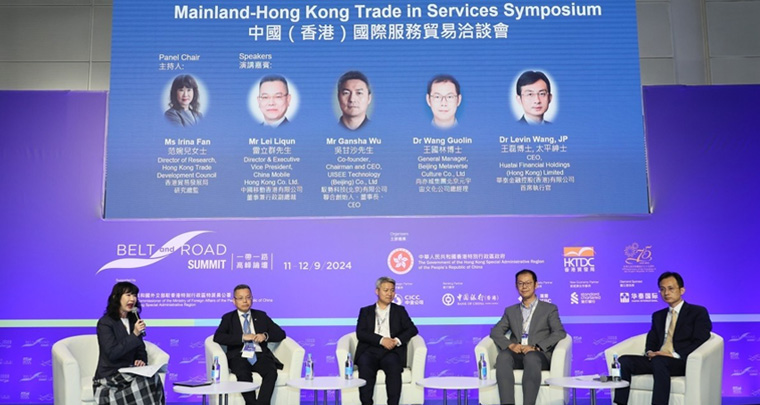BRI-Backed Nuclear Showcase Set to End Pakistan's Power Shortfall
As well as boosting Pakistan's power generation, deal establishes China as key nuclear technology exporter.

In perhaps one of the more politically sensitive Belt and Road Initiative (BRI) developments, last month saw China and Pakistan agree terms on the installation of an 878-km power transmission line. Once in place, this will link Lahore with southeastern Matiari, a hub city for the electricity generated in many of the China-backed power plants already operational within the China-Pakistan Economic Corridor, the massive infrastructure redevelopment and energy generation programme at the heart of Pakistan's bid to address its acute logistical problems and its vast power undersupply, as well as the BRI, China's own hugely-ambitious infrastructure and trade facilitation programme.
While – aside from a few environmental concerns and suggestions that China's largesse represents a form of financial colonisation – the developments have largely found approval within Pakistan, they have become something a flashpoint with neighbouring India. The relationship between the two countries has long been fraught, with distrust and recriminations dating back to well before 1947, when they emerged as independent states amid the gradual dismantling of the British Empire.
Now, in addition to several territorial issues, India – one of the few major economies not to embrace the benefits of the BRI – is known to be unhappy that China is effectively wooing a number of countries, such as Pakistan and Nepal, that it sees as rightly within its own sphere of influence. Perhaps most gallingly, China is seen as helping Pakistan further develop its nuclear-power sector, a hugely sensitive issue given the long-term nuclear-weapons standoff between the two South Asian countries.
While this latest development does not relate to Pakistan's rapidly expanding nuclear-power sector, with the electricity set to be transmitted via the new power transmission line actually sourced from several China-backed, coal-fired facilities in the west of the country, that is not to say that China's isn't heavily committed to helping Pakistan boost its nuclear-power generation capacity. Indeed, much of the basis of the present and continuing China-Pakistan economic co-operation revolves around power generation – both conventional and nuclear – as the Pakistan government looks to solve its longstanding energy-generation shortfall.
As recently as 2013, with the country's demand topping 15,000 MW, Pakistan only had a total generational capacity of 11,000 MW. With the gap between demand and supply only set to grow, the country has since set about accelerating the expansion of its nuclear-power programme, with China acting as financial backer, technical consultant and lead contractor. Ultimately, it is hoped that this tactical alliance between the two countries will result in Pakistan having a domestic power generation capacity of 40,000 MW by 2050.
That is not to say that China sponsored Pakistan's introduction into the still relatively small number of nations with nuclear-power facilities. Predating China's initial involvement by more than 20 years, 1971 saw Toronto-headquartered GE Canada install and then manage KANUPP1, the Karachi-based facility that produced Pakistan's first nuclear-derived electricity. Although Canada cut all ties to the plant in 1976 after Pakistan refused to sign the Non-Proliferation of Nuclear Weapons Treaty, the plant continued in service until 2002. Following a four-year upgrade, it resumed operation and continues to produce electricity, albeit at a reduced level.
China's involvement with the country's nuclear programme began in August 1993, when the two countries jointly developed the Chashma Nuclear Power Complex in Punjab, Pakistan's most populous province. Marking the first time China had exported its nuclear technology, the installation initially comprised two 300 MW generating units and two subsequent 340 MW units, all of which are now connected to the national grid.
In 2013, China and Pakistan agreed to add a fifth unit to the Chashma facility, which is due to go online in 2020. That same year, construction also began on two state-of-the-art 1,000 MW+ reactors – KANUPP-2 (K-2) and KANUPP-3 (K-3) – close to the original reactor site, with both due to be operational by 2021. Acting under the auspices of the International Atomic Agency, the sector's global regulator, three of the mainland's leading nuclear-power companies – the China General Nuclear Power Group, the China National Nuclear Corporation (CNNC) and the China Atomic Energy Authority – co-operated in the development of the two new facilities, with CNNC covering at least US$6.5 billion of the costs of the $10 billion project through a series of low-cost loans.
At the core of the two new facilities is the third generation HPR1000 Hualong One reactor, the model at the forefront of China's bid to export its nuclear technology. One such model is currently undergoing acceptance tests in the UK, while another has been earmarked as the centrepiece for Argentina's fifth nuclear facility with work on the project scheduled to begin in 2020. In the meantime, as well as helping Pakistan meet the shortfall in its electricity supply, while tying the country into wider goals of the BRI, the Punjab nuclear facility is also acting as China's calling card as it looks to establish itself as a world leader in safe and cost-effective nuclear-power generation.
Geoff de Freitas, Special Correspondent, Lahore





